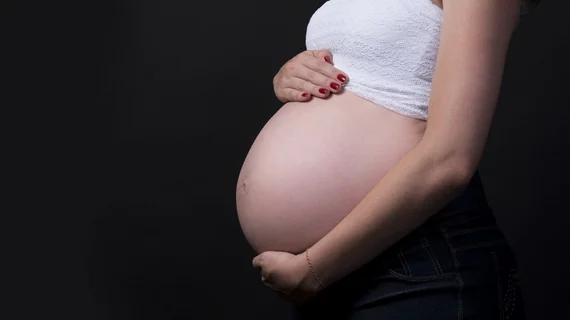Giving birth linked to 16% increased risk of CVD, stroke
Regardless of a woman’s smoking status, her BMI or whether she has any cardiovascular comorbidities, giving birth to at least one child raises her risk of developing heart disease or stroke by 16 percent, according to research out of Tongji Medical College in Wuhan, China.
“Many studies have shown that reproductive factors may affect women’s health in later life,” first author Wenzhen Li and colleagues wrote in the European Journal of Preventive Cardiology, where their findings were first published Dec. 19. “Until now, many studies have focused on the role of parity in the development of CVD; however, it remains controversial given the inconsistency of previous findings.”
A pregnant woman's heart has to work harder to meet the demands of both her body and her child’s, the researchers said, but scientists aren’t sure how that added stress translates to heart disease down the road. Li et al. said pregnancy leads to inflammation and the accumulation of fat around a woman’s abdomen, in her blood and in her arteries—changes that could have lasting effects on the patient’s circulatory system.
The authors conducted a meta-analysis of 10 cohort studies involving more than 3 million pregnant women and 150,512 incident cases of CVD or stroke. They identified a 16 percent increased risk of heart disease in women who’d ever given birth compared to those who were nulliparous.
A nonlinear J-shaped relationship between parity and CVD risk emerged in further analyses, resulting in a 4 percent increased risk of CVD with each live birth, irrespective of whether a patient was hypertensive, diabetic, smoked or was overweight. More specifically, each live birth was linked to a 5 percent increased risk of coronary heart disease and a 3 percent higher risk of stroke.
“Several potential mechanisms might contribute to the J-shaped association between parity and CVD risk,” the researchers wrote. “Generally, women who did not have any children may suffer from infertility, and polycystic ovary syndrome, ovulation disorders and tubal factor could partly explain the platform stage of the J-shaped relationship between parity and CVD risk. Increasing parity after two children could result in repeated exposure to hormone alterations, which may lead to the accumulation of physiological changes such as pancreatic beta-cell proliferation and progressive insulin resistance.”
The team also said repeated and continuous lifestyle changes, like gaining weight during pregnancy or gestational complications, could factor heavily into a woman’s future heart health.
“Even so, it is still unclear whether normal pregnancies with increasing parity could exert a cumulative burden on CVD proceeding or whether other potential factors of multiparous women exert more CVD risk,” Li et al. wrote. “Therefore, further studies with more potential confounders should be taken into consideration to understand thoroughly the association between parity and the maternal risk of CVD.”

